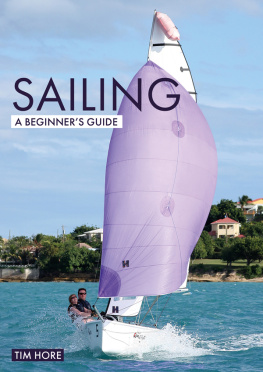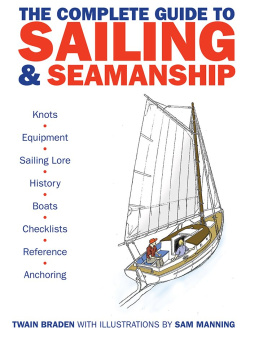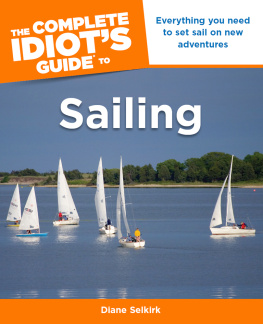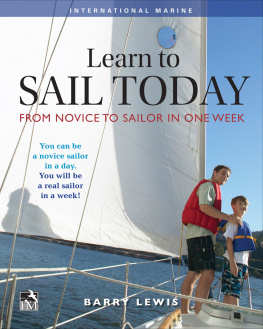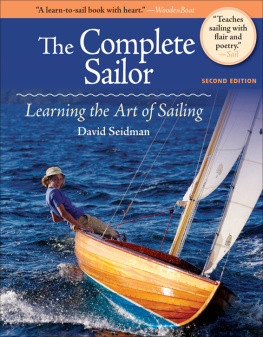Contents
Guide


Sailing is a wonderful sport and open to all. For the purposes of this book, we have had to use the terms helmsman and he throughout, but please interpret this as meaning either male or female.
CONTENTS
Go online for a video demonstration: Click here or visit www.fernhurstbooks.com search for
Sailing: A Beginners Guide and click on Additional resources.

INTRODUCTION
Dinghy sailing is the most popular and best way to learn how to sail. It teaches you skills that can then be applied to yacht sailing, windsurfing or even kite surfing. With so many designs available, there is a dinghy to suit everyones needs, from stable boats for beginners to high-performance machines for serious racers.
Sailing is a fantastic sport. Understanding where the wind is blowing from and realising how to harness this power is all absorbing and totally exhilarating. I have been a keen sailor since the age of 14, sailing dinghies, windsurfers and offshore yachts. I am a qualified RYA Senior Dinghy Instructor and regularly teach people of all ages to sail. My approach is always to help them enjoy the sport of sailing and my passion is for them to have fun.
Sailing: A Beginners Guide is the perfect partner either for anyone new to dinghy sailing or for those looking to refresh their sailing techniques. Step-by-step instructions explain the basic skills of sailing a single- or two-person dinghy. Youll be guided through each stage of the learning process, starting with what you need to know prior to setting out on the water and how to stay safe.
Many of the photographs are taken from remote onboard cameras, including one at the top of the mast, to provide unique and highly instructive images. You can also go online to watch free video demonstrations showing you how to put the theory into practice view them at view them here or at www.fernhurstbooks.com: Search for Sailing: A Beginners Guide and then click on Additional resources. You can see full length instructional videos on our sailaboattv YouTube channel.
I hope you enjoy reading the book and, better still, become a keen sailor.

TIM HORE

KNOW YOUR BOAT
IN THIS CHAPTER YOU WILL LEARN THE TERMINOLOGY USED IN SAILING, AS
WELL AS THE NAMES FOR THE PARTS OF YOUR BOAT, SAILS & RIGGING
THE BASICS
THE BOAT

Points of view from a dinghy
Looking at a plan view of the hull, the left-hand side of the boat is called the port side and the right-hand side the starboard side. The front of the boat is called the bow and the rear is the stern or transom. Anything that happens ahead of the direction of travel is called ahead, and behind the boat is called astern.
The wind will push the boom to one side of the boat or the other the side of the boat under the boom is called the leeward side, while the side of the boat opposite the boom is called the windward side. The leeward and windward sides of the boat will change, depending on the wind direction in relation to the boats course (see the Points of Sailing chapter on ), but all the other descriptions mentioned above will always remain the same.
THE SAILORS
The person steering the boat is called the helmsman, but when we use this term it applies to both male and female. The helmsman steers the boat by holding the tiller extension across and in front of his body with one hand, and the mainsheet in the other hand. This is called the dagger grip and allows him to control the mainsail and rudder easily.

The helmsman holds the tiller and mainsheet in a dagger grip
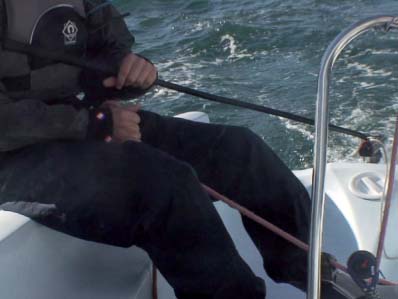
The tiller extension is held in the back hand and the mainsheet in the front hand
In a two-person boat the second person is called the crew. This person controls the headsail called the jib and, if fitted, the spinnaker.
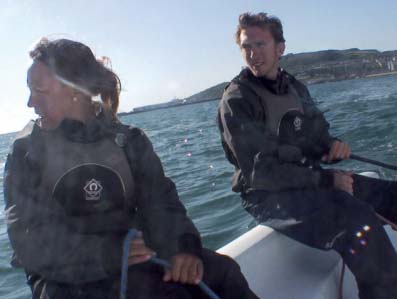
The second person is called the crew
Both the helm and the crew sit in an area called the cockpit, from where they operate the boat. To help them lean out and balance the boat, they can hook their feet underneath the toestraps, which are webbing straps securely fixed to the inside floor of the cockpit.

The helm and crew work as a team, they can use toestraps to lean out to balance the boat
DIFFERENT TYPES OF BOAT
Boats come in various shapes, sizes and construction to suit different crew weights, aspirations and sailing environments. The hull can be made from wood, fibreglass or hard-wearing durable plastic so, depending on what type of sailing you plan to do, there will always be an appropriate boat for you.
Rather than dashing out and buying the first boat you see, it is much better to try as many different types as possible to ensure that you purchase the best one for your needs. Sailing centres offer great advice and choice, while sailing clubs are also a good place for information and some even provide boats for hire.
For your first boat, perhaps consider a second-hand one again your sailing centre or club can advise you on where to look.
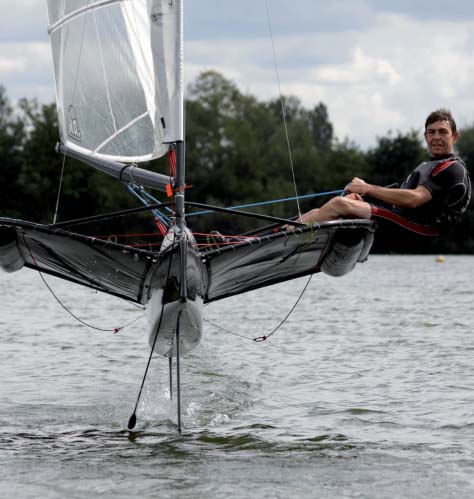
Sailing has many levels literally is he sailing or flying?
BASIC COMPONENTS
Every boat has the same basic components, although variations apply from boat to boat. These components are the hull and rudder assembly

